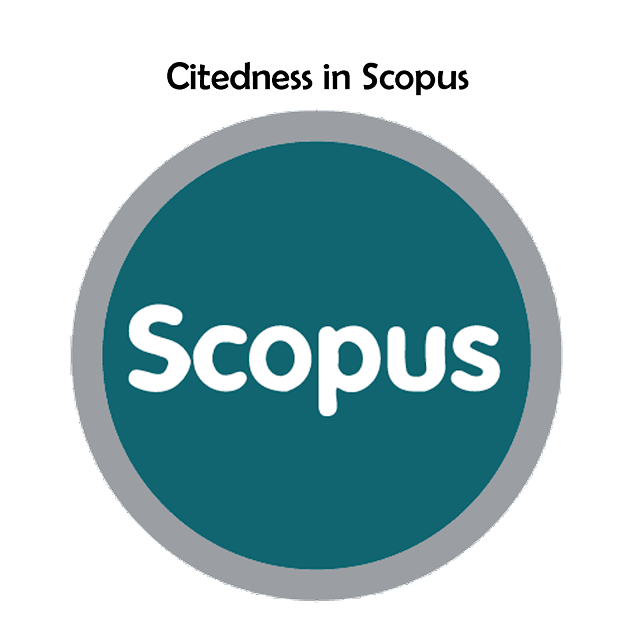K-Nearest Neighbors Analysis for Public Sentiment towards Implementation of Booster Vaccines in Indonesia
Ihwana As'ad(1*); Muhammad Arfah Asis(2); Hariani Ma'tang Pakka(3); Randi Mursalim(4); Yusnita binti Muhamad Noor(5);
(1) Universitas Muslim Indonesia
(2) Universitas Muslim Indonesia
(3) Universitas Muslim Indonesia
(4) Universitas Muslim Indonesia
(5) Universiti Malaysia Pahang Al Sultan Abdullah
(*) Corresponding Author
AbstractIn order to prevent the spread of COVID-19 in Indonesia, the Government of the Republic of Indonesia has been implementing a booster vaccine program since January 12th, 2022, with priority for the elderly and vulnerable groups as well as those who got the second C-19 vaccine longer than 6 months. The implementation of this program raised many pros and cons among public which were expressed either positively or negatively through social media. Therefore, sentiment analysis is needed to examine these phenomenons. This study aims to determine the positive and negative response from public by employing K-Nearest Neighbor method. A total of 2,000 commentary data were collected to be in turn classified based on positive and negative sentiments. There are 500 comments used as training data and divided equally to positive and negative class, each consists of 250 data. Using the value of K = 9, the results show a positive sentiment of 43% while a negative sentiment of 57%. Based on the validity test using 10-fold cross validation, an accuracy of 82.60% was obtained, a recall value was 82.60% with a precision of 83.89%. KeywordsK-Nearest Neighbors; RapidMiner; Sentiment Analysis; Vaccine Booster
|
Full Text:PDF |
Article MetricsAbstract view: 574 timesPDF view: 266 times |
Digital Object Identifier https://doi.org/10.33096/ilkom.v15i2.1561.365-372 https://doi.org/10.33096/ilkom.v15i2.1561.365-372
|
Cite |
References
R. Nuraini, “Kasus Covid-19 Pertama, Masyarakat Jangan Panik,” 2020. https://indonesia.go.id/narasi/indonesia-dalam-angka/ekonomi/kasus-covid-19-pertama-masyarakat-jangan-panik (accessed Mar. 11, 2022).
C.-19 Hotline, “Tok! Vaksin Booster GRATIS untuk Seluruh Masyarakat Indonesia,” 2022. https://covid19.go.id/artikel/2022/01/11/tok-vaksin-booster-gratis-untuk-seluruh-masyarakat-indonesia (accessed Mar. 11, 2022).
A. Tanggu Mara, E. Sediyono, and H. Purnomo, “Penerapan Algoritma K-Nearest Neighbors Pada Analisis Sentimen Metode Pembelajaran Dalam Jaringan (DARING) Di Universitas Kristen Wira Wacana Sumba,” Jointer - J. Informatics Eng., vol. 2, no. 01, pp. 24–31, 2021, doi: 10.53682/jointer.v2i01.30.
L. R. Dharmawan, I. Arwani, and D. E. Ratnawati, “Analisis Sentimen pada Sosial Media Twitter Terhadap Layanan Sistem Informasi Akademik Mahasiswa Universitas Brawijaya dengan Metode K- Nearest Neighbor,” J. Pengemb. Teknol. Inf. dan Ilmu Komput., vol. 4, no. 3, pp. 959–965, 2020, [Online]. Available: http://j-ptiik.ub.ac.id/index.php/j-ptiik/article/view/7099
S. Rohwinasakti, B. Irawan, and C. Setianingsih, “Sentiment Analysis on Online Transportation Service Products Using K-Nearest Neighbor Method,” Proc. Int. Conf. Comput. Information, Telecommun. Syst. CITS 2021, vol. 7, no. 3, pp. 9312–9321, 2021, doi: 10.1109/CITS52676.2021.9618301.
S. Pramana, B. Yuniarto, S. Mariyah, I. Santoso, and R. Nooraeni, “Data mining dengan R konsep serta implementasi,” Jakarta: InMedia, 2018.
M. Andreotta et al., “Analyzing social media data: A mixed-methods framework combining computational and qualitative text analysis,” Behav. Res. Methods, vol. 51, no. 4, pp. 1766–1781, 2019.
T. Pawar, P. Kalra, and D. Mehrotra, “Analysis of Sentiments for Sports data using RapidMiner,” in 2018 Second International Conference on Green Computing and Internet of Things (ICGCIoT), 2018, pp. 625–628.
B. Liu, “Sentiment analysis and opinion mining,” Synth. Lect. Hum. Lang. Technol., vol. 5, no. 1, pp. 1–167, 2012.
Exportcomments, “Export Social Media Comments,” 2022. https://exportcomments.com/ (accessed Jul. 29, 2022).
M. Durairaj and N. Ramasamy, “A comparison of the perceptive approaches for preprocessing the data set for predicting fertility success rate,” Int. J. Control Theory Appl, vol. 9, no. 27, pp. 255–260, 2016.
B. Zaman and E. Winarko, “Analisis Fitur Kalimat untuk Peringkas Teks Otomatis pada Bahasa Indonesia,” IJCCS (Indonesian J. Comput. Cybern. Syst., vol. 5, no. 2, 2011.
M. A. Rosid, A. S. Fitrani, I. R. I. Astutik, N. I. Mulloh, and H. A. Gozali, “Improving text preprocessing for student complaint document classification using sastrawi,” in IOP Conference Series: Materials Science and Engineering, 2020, vol. 874, no. 1, p. 12017.
O. R. Hartono, “Indonesian Stoplist,” kaggle, 2016. https://www.kaggle.com/datasets/oswinrh/indonesian-stoplist (accessed Jul. 01, 2022).
P. Pascasarjana, M. Ilmu, S. Tinggi, M. Informatika, D. A. N. Komputer, and N. Mandiri, “Analisis Sentimen Review Kosmetik Pada Website Femaledaily Menggunakan Metode Naive Bayes Dan Support Vector Machine Berbasis Particle Swarm Optimization,” 2019.
A. A. Maarif, “Penerapan Algoritma TF-IDF untuk Pencarian Karya Ilmiah,” J. Electr. Comput. Eng., 2015.
A. Mishra and S. Vishwakarma, “Analysis of tf-idf model and its variant for document retrieval,” in 2015 international conference on computational intelligence and communication networks (cicn), 2015, pp. 772–776.
F. Gorunescu, Data Mining: Concepts, models and techniques, vol. 12. Springer Science & Business Media, 2011.
A. Bode, “K-nearest neighbor dengan feature selection menggunakan backward elimination untuk prediksi harga komoditi kopi arabika,” Ilk. J. Ilm., vol. 9, no. 2, pp. 188–195, 2017.
Refbacks
- There are currently no refbacks.
Copyright (c) 2023 Ihwana As’ad, Muhammad Arfah Asis, Hariani Ma’tang Pakka, Randi Mursalim, Yusnita binti Muhamad Noo

This work is licensed under a Creative Commons Attribution-ShareAlike 4.0 International License.







